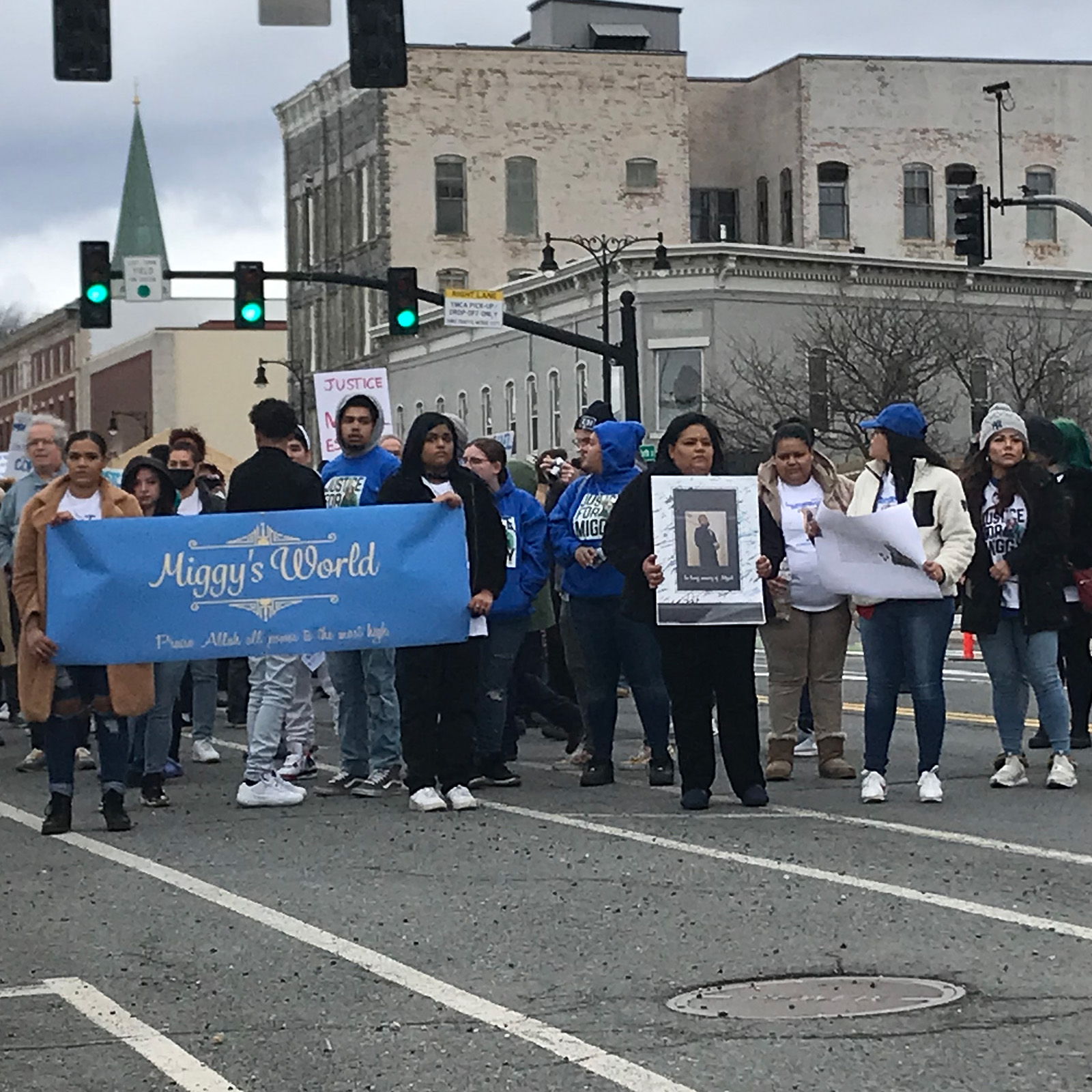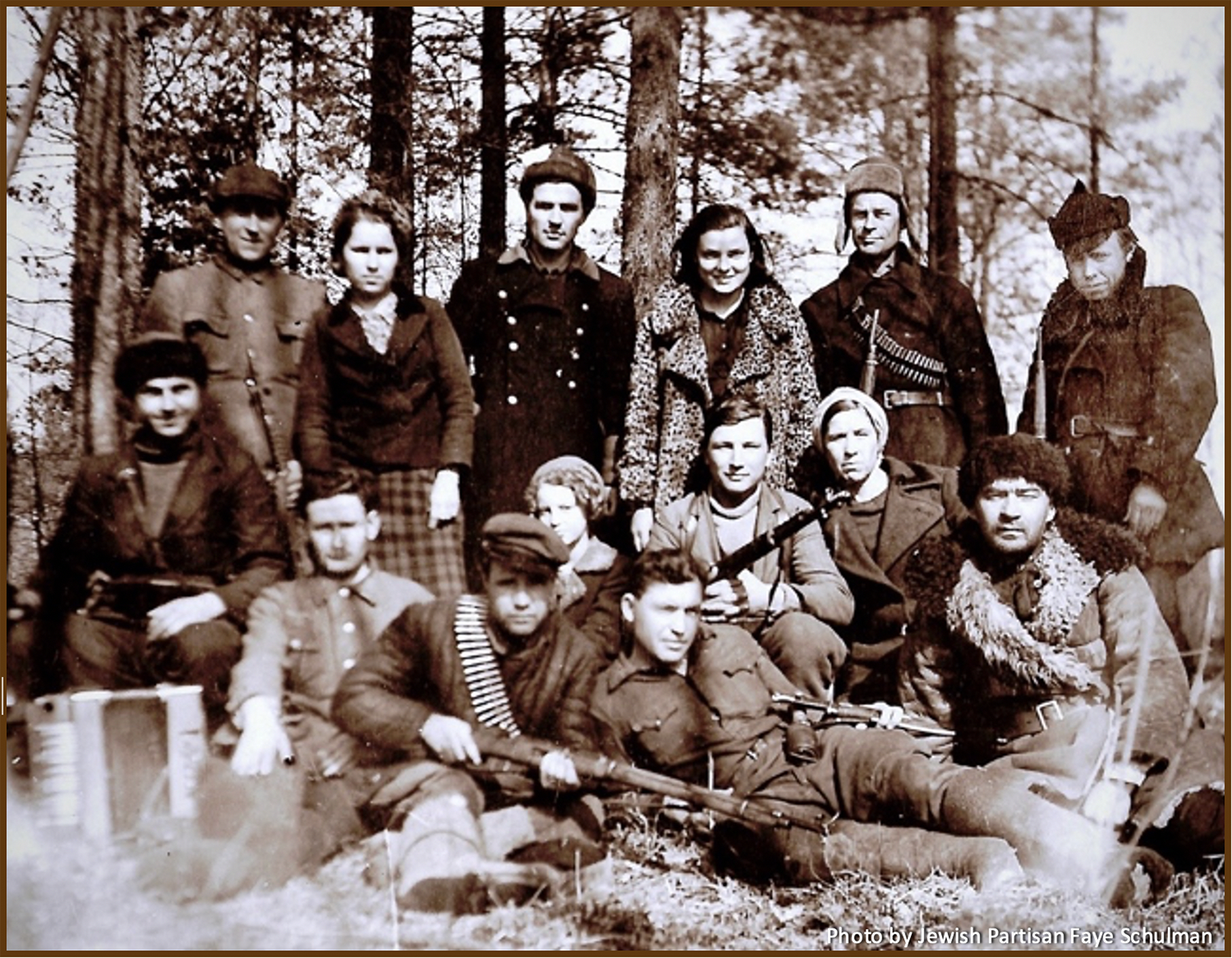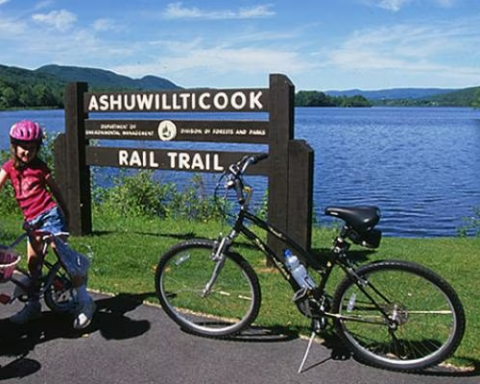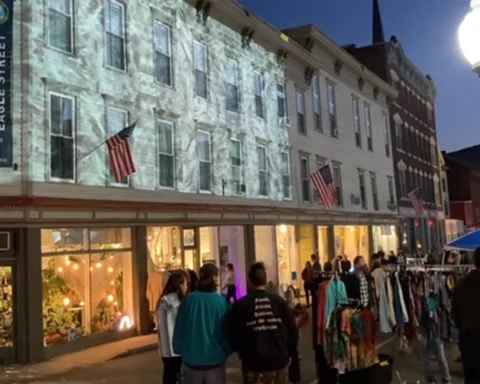Podcast (top-left-corner): Play in new window | Download
Hey, Greylock Nation —
This episode, #163, is a special edition of the Top Left Corner. It begins a short series examining the March 25 killing of Miguel Estrella by Officer Nicholas Sondrini of the Pittsfield Police Department. I’m not going to go over the known facts of the incident in great detail, since local reporting in The Berkshire Eagle and other outlets have covered the basics. Already reported:
A 911 call was placed by Estrella’s domestic partner, Daneya Falwell, stating that he had been engaged in self-harm.
Police arrived and determined, according to the report of an internal police department investigation, that Estrella could not be subjected to involuntary medical or psychiatric detention per Massachusetts law.
Estrella refused medical assistance when EMTs arrived, and police left the residence.
Minutes later, police returned to the scene, encountered Estrella, now in possession of a knife, and they say, after attempts to de-escalate the situation were unsuccessful, fired Tasers at Estrella when he allegedly approached them at a fast pace in a fighting stance, knife raised.
Officer Sondrini fired twice into Estrella’s torso, resulting in Estrella’s death later that night in the hospital.
According to Pittsfield Police Chief Michael Wynn, the department opened an internal investigation the day after the shooting, which produced a report on April 8.
According to reporting by The Eagle, Wynn read the investigation’s report and, on April 14, sent the investigators back to work on it further, he claimed, to better align with the Criminal Justice Reform Act of 2020. The revised preliminary report showed up on the chief’s desk a week later.
Conclusion? Officer Sondrini’s actions were correct, and, based on the facts of the incident, Estrella’s death was nearly unavoidable, if tragic.
Estrella’s family and the community at large roundly reject this assessment. The Berkshire District Attorney’s office has been conducting its own review of the officers’ actions, relying on investigators from the Massachusetts State Police.
Pittsfield police do not wear body cameras, and the initial report interviewed only the responding officers, so parsing the events of the evening of March 25 to come up with an accurate picture requires work, and more than a little faith truth will triumph in the end.
Some in the community have pointed out the police typically separate suspects soon after arrest for participating in the same crime to ensure that they don’t have an opportunity to “get their stories straight.” They ask what the Justice Reform Act of 2020 has to do with the Pittsfield PD’s simple explanation of the facts as they happened, and wonder if the report has been altered to protect the officers involved by ensuring the removal or editing of any description of actions that don’t pass muster.
In case after case, in both Massachusetts and nationwide, police received desperate calls for help from families of persons suffering mental health crises. In case after case, the consequences of the calls are the death of the sufferer, often within scant minutes of the police arriving at the scene.
Investigations, both internal and independent, typically yield the judgements, as heartbreaking as they are predictable, that the police did no wrong. In a chilling bit of coincidence, just this past Friday, Police in Pittsfield, New Hampshire were cleared by their state’s Attorney General of any and all wrongdoing in the shooting death of 52-year-old Tony Hannon, a man suffering a mental health crisis, whose wife called 911, begging for help as Hannon threatened self-harm.
Much as military leaders chasten the press and public for questioning decisions made in the convenient “fog of war,” police departments are quick to criticize their critics for ignorance about how limited their options are in the high-pressure atmosphere typical of mental health crises. If only the public realized how any delay in the use of force might endanger the lives of officers and bystanders.
Except it’s a lie. For decades, a handful of other communities across the country have instituted programs specifically engineered to de-fuse mental health crises centered around methods that aren’t coercive, law-enforcement models. When the subject of these visits isn’t confronted with lights and sirens, followed by weapons drawn by men in paramilitary outfits, compliance rates leading to peaceful outcomes are, according these programs, unsurprisingly higher.
The public will never have a transcript of exactly what Officers Sondrini and Christopher Coffey said, nor any proof of how commanding or calming their de-escalation efforts were. The community wants to know how much of the officers’ response to the situation was based on Estrella’s presence as a large, muscular person of color. We know only that a man who was loved by many is now mourned after a call for help turned into an execution order.
The Greylock Glass has always sought to shed light on potential solutions, rather than painful details. In this vein, while we wait for the results of the District Attorney’s criminal investigation, we’re going to be hearing from a few individuals who may be able to explain how we can make sure tragedies like the killing of Miguel Estrella are less likely to happen again.
NTRVW: Ivy Moody Staff Attorney at the Mental Health Legal Advisors Committee
Editor’s Note: The Greylock Glass pays to have rough transcripts of interviews produced. We attempt to remain as faithful as possible to the speakers’ original meaning, and apologize for any errors of transcription. That said, even the imperfect transcription we perform is costly. Please support us financially by becoming a member or making a one-time contribution to help us continue to provide this service.
Top Left Corner: And with me on the line is Ivy Moody, staff attorney at the Mental Health Legal Advisers Committee. Ivey, thanks so much for being on the Top Left Corner.
Ivy Moody: Wonderful to be here. Thank you for inviting me.
Top Left Corner: Well, this is I wish the circumstances were better. This is a tragedy that we’re talking about today. And the question of whether it was a preventable tragedy is up in the air right now. I do want to, as I mentioned in the green room, the digital green room. I try to focus on the underlying questions, the foundational issues, rather than the play by play, because just focusing on, you know, the details can sometimes leave you a little bit lost when it comes to looking for solutions. Tell me what the Mental Health Legal Advisers Committee does.
Ivy Moody: Absolutely. So we are an independent state agency, so we are funded by the state. And our role is to advocate for advancing the rights of individuals with mental health challenges across the Commonwealth. We do both specific litigation around mostly class actions for individuals who are not receiving the right accommodations or appropriate mental health care. And then we also do a lot of legislative advocacy. Specifically right now, our organization is doing a lot within school programing, family law areas and policing with mental health.
Top Left Corner: Hmm. So it sounds like I got the right person on the on the line. The the issue of and this is something that I’ve talked about with a number of people at different shows over the last few years is the lack of access to care, to mental health care, because for some reason, you know, even if you have insurance, they don’t treat mental health as just plain old health. I guess they decide it’s like dental. You kind of don’t really need it as much. But the the truth really starts with organizations like yours. It’s advocacy and education that gets people sort of on board. What would you say the public’s perception is about mental health today? Has it improved over the last couple of decades? I hope maybe.
Ivy Moody: I think we have to have hope that it has improved. When we look at mental health, we have to go back to the fact that we have inherently an institutionalization history and a carceral approach to mental health. And we still see and have the remnants of this idea that people with mental health conditions are dangerous and have to be removed from community, or it’s something that you just solve and it goes away and the person reenters our, quote unquote, normal society and everything’s fine. What I think we’re seeing now, especially coming out of COVID, is a recognition that mental health is ebbs and flows for all of us. It’s something that most people at some point in their life will face more challenges and then less or maybe more and more. So I think that we as a society are seeing a turning point away from that and carceral approach, but we’re still working on it. And I think when we start to talk about these issues and we see the approach, especially around policing, it’s that remnants of that history of institutionalization that’s really still there.
Top Left Corner: Hmm. You know, I think the idea that the pandemic is I mean, if if if if you can find silver linings, it’s that it has changed our our attitudes about a number of things, including things like mental health. I can’t tell you the number of people who have admitted that they’ve experienced real depression for the first time, or at least they’ve they’ve noticed it. They’ve they’ve, you know, identified it. But of course, of course, mental health is not perceived the same in all circles. It is not the same for women as it is for men. Historically, women have been really have borne the brunt of of victimization because of anything that resembled mental health issues, women who used to be locked up and sort of shipped away. The the perception of mental health is different among between Caucasians and communities of color, among the wealthy and among low income groups. What do you think is the danger? I know this is a leading question. It should be is there a danger? But what is the what is the ramifications of having different standards when it comes to assessing the impact of mental health concerns?
Ivy Moody: I think any time that there is a disparity in how we’re approaching. Mental health. You’re going to have an issue or really anything. You’re going to have dangers and concerns with that. I think that what we’re seeing right now specifically, especially in the state of Massachusetts, is, as you mentioned, a complete lack of resources. And when you don’t have the resources to identify and address mental health, you start to see mental health come up and be labeled as other things. You see it as this person just doesn’t want to work. Or this person is, you know, doesn’t is unhoused and it’s because of something else they did or it’s a substance abuse issue or myriad of things that can happen and can get mislabeled around mental health. Ultimately, though, it is a resource issue and when we don’t have the resources other than it comes up in other things, but it also starts to become a broader and broader issue for all of us and can harm the whole community. So I don’t know if that answers your question specifically, but we absolutely need to be addressing it and recognizing the differences that are coming up. It’s a little outside the scope of our conversation, but if you look at the Department of Correction numbers of those with mental health diagnoses in our institutions and our prisons, the women’s side is about 70% by different statistics, and that’s enormous. And I think we start to see it happening as we just put people in jail, in prison, and that’s not a solution. And unfortunately, that’s the direction a lot of it heads. And we don’t have those community resources.
Top Left Corner: Yeah, no, I think that’s not to too far afield of this conversation. I think when we’re talking about, you know, lack of parity in treatment in in assessments and as you said, resource allocation, you’re talking about people’s lives here and and how the outcomes can be just so vastly different. Somebody in one cohort ends up getting the help they need. Maybe it’s a matter of talk therapy, maybe it’s a matter of medication or a combination of the two. And they go on to lead a productive life. Another person spirals. Into an abyss and ends up in the legal system. Maybe they have the same exact diagnosis or would have the same exact diagnosis. But the the environmental factors are cause profoundly different results. And, of course, this is the case for Miguel Estrella in Pittsfield. Who. I don’t I didn’t get a chance to speak to the family yet. I don’t know how long he was aware or that his family was aware that he was suffering from a mental health crisis or was one was coming down the pike. But I if if we would assume at least and maybe this is wrong to assume, but if we assume that they had some idea that, you know, he was in need of mental health resources and couldn’t get them. We he would be one of many, many people of color who are not getting these resources and end up. The subject of a911 call such as he was, you know, his fiancee, his I guess his family were concerned he’d cut himself in the face with a knife. The police showed up. The the situation de-escalated. I guess his fiancee said that she thought that he’d be okay and she could handle him. But then, you know, a little I think an hour or 2 hours later, they’re making a trip to the same address. And now he has the knife in his hand and is shot and killed. What sort of. What sort of numbers or what sort of experience has Mitchell Lacey had confronting these really tragic outcomes?
Ivy Moody: So I wouldn’t say that I don’t want to speak specifically to the Australia case because obviously our hearts go out to their to their family and to the community and we don’t have direct contact with them either. What I will say is that even The Washington Post as recently as 2020, put out statistics on their databases that one in four people who are fatally shot by police have a mental health illness. So we know that this is happening over and over again across our communities. What it starts with is, as we’ve mentioned, is the resources in the community. And one thing I see is really a big proponent of and we’re working with a lot of different organizations to create our peer run programs and community run programs so that when an individual starts to feel that maybe things are escalating or they’re not in a great place, they may or may not have the insurance options or a provider per se to reach out to. But there is a community based organization that is non carceral. It’s not. We talk about interplays of power here and it’s a peer run organization or a place where they can go and receive the care that they need and maybe even just the support that they need.
Ivy Moody: Because when we’re talking about the intersections of all of our different, whether it’s our race or ethnicity or our socioeconomic status, where we have our mental health crises is really going to determine what our outcome is. And creating these living room environments is often what they’re called. The Wildfire Allowance has a handful of them on Western Mass, gives people a place to go. It gives a place for communities, neighbors, families, friends, someone to call this, not the police. And I think this ties really well into the 1988 bill, which there’s a bill in the state of Massachusetts. There’s a House bill 2692 Senate bill 2065, and then obviously the federal legislation to roll out the 1980 number. And I think this is sort of the situation that 98 is thinking about. It’s a growth out of the National Suicide Hotline prevention, but it’s also supposed to be a resource line. It’s there’s no promoting there’s no geotagging attached to the numbers. It’s just supposed to be a place to have resource and sort of trying to help people where they are. Before we get to a crisis and I can I can jump a little bit more into the alternative community response teams as well, if you want to go there.
Top Left Corner: I wish yeah. No, I wish you would, because this ultimately I mean, these are where the answers lie. These these these topics here. So. Yeah, please continue.
Ivy Moody: So right now, I would say nationally and I you start out saying I’m an expert, I will say I am heavily involved in the conversation. I think that we’re as a country grappling with these issues and we’re all discussing things around the phrase the most promising practices. Right. We don’t necessarily know what the best practice is. And inherently, pretty much anyone who’s dealing with these issues and grappling with them will say it is community by community. It is community building what works best for them. But generally, there are two models that are coming out to sort of be the the options or the ways people are thinking about this. The first is a co responder model, and it sounds like Pittsfield Police Department may have something like this. And I’m not as familiar with their program specifically, but co responder is the idea that there are social workers embedded in the police force who respond with law enforcement to situations where an individual may be in mental health crisis? The alternative to that is what’s called the alternative crisis response model. Specifically in Massachusetts. It’s all surrounding a bill called Aces, which is an act to create alternatives to community emergency services. And the alternative response model is non-law enforcement. So it may come out of 911, it may come out of 98, it may come out of another line in the community. But it is a team of community members.
Ivy Moody: Usually it’s an EMT, a social worker, or a mental health provider, and then a peer specialist or a peer trained peer responder. And they respond to calls. Just as you’ve seen, we’ve seen in Star out of Denver, Colorado, in cahoots out of Eugene, Oregon, to meet people where they are. They’re not in law enforcement. They are trained to address these situations. They have the tools to do so and they have the tools to truly de-escalate. And so between the two models I see is strongly endorsing the alternative crisis response model because it’s a non law enforcement. The concerns around the co responder model continue to be that it is still inherently a law enforcement response. And when we talk about de-escalation, which really is the the baseline to these these sort of conversations, anytime you have law enforcement showing up with a badge and the gun and the Taser and the handcuffs, they’re an inherent, escalating force. And we know that when someone’s in mental health crisis, anything that you’re doing to add to that fight or flight situation, it can be really dangerous. And so those are sort of the two ideas that are coming around right now. And just for your listeners, the alternative crisis response model Bill in the state of Massachusetts, the ACS bill is House Bill 2519 and Senate Bill 1552.
Top Left Corner: Okay. This is this is a lot of really interesting, interesting information about something that I, I did dabble. I did find out about the the cahoots program. Now, I had thought that sort of this alternative response model was a new idea, but cahoots has been going on over three decades, three decades now. So they have and they have, you know, numbers. I mean, by now they have the statistics to show and they do show that they’ve had a lot of success. What has taken so long for the rest of the country to catch up to? Eugene, Oregon.
Ivy Moody: I don’t have an answer for you on that.
Top Left Corner: I mean, it’s Eugene, you know? I mean, come on.
Ivy Moody: I think that what we’ve seen really in the last two years is a real. Reframing and rethinking about policing generally. And I want to stress that the conversations we’re having, at least in Massachusetts with Lacey, we’re having these conversations with law enforcement. This is not a US versus law enforcement in any way. This is a group conversation about how to help our communities, because this is a this is a health crisis at the end of the day. And I think when we start rethinking about police and what we want their roles to be and what we don’t, we see that the police also are saying we don’t we’re not equipped for this. This isn’t really part of our this is health. This is not community safety. And so I think that there’s been a catalyst to a conversation around it. And we’re starting to see also a focus on what is community health look like, what is public health. And we’re fortunate that mental health has started to really be part of that conversation as well. So, as you said, if anything good can come out of COVID, it does seem to be that it really catalyzed this conversation.
Top Left Corner: Yeah, now it is. And I know that many of my listeners are they are less generous when it comes to how we frame police involvement in these issues. I personally am not a an abolitionist. I have some friends who are they believe that the goal should be to abolish law enforcement, you know, or at least as it’s known today entirely. And I I’m not there yet because I do think that there’s always going to be some. Well, just some reality that, you know, a police officer is, in fact, sometimes what you need. You know, it’s just until until so many socioeconomic factors are fixed and fixed for good. I mean, we’re talking, you know, science fiction, utopian levels of good. I think you’re always going to have a need for that. I don’t know. I’m going to I’m going to catch a lot of hell from my friends. But but I don’t believe that that most officers show up at a situation hoping or intending to and to use their firearm as as a solution. I mean, I have to believe that I really do. I may be naive, but I really think that that police officers in general get into the job, you know, other than the fact that it’s generally a pretty good, secure job because they do care about the community. And if you start at that point, you have to ask, well, what is it that? Police officers what is and you know, from a legal stand, I realize you’re not a clinician. You’re you know, you’re an attorney. But from your experience, what has been the response of police officers and departments as to why things went sideways so quickly in some of these cases? Do we have any data on that?
Ivy Moody: I don’t have the data on that. I think one thing we do have, as you said, out of cahoots. They their numbers and I would have to double check, but I think it’s close to less than 1% of their calls have required backup from law enforcement. So what we do see is that. Appropriate responders who are the right people and the right tool for the job don’t result in those outcomes, basically.
Top Left Corner: Good.
Ivy Moody: So when we talk about police responding to mental health, I think that when you’re a police officer, your lived experience and your repeated interactions with the public are very much that you’re very cautious and you’re very worried and you are reactive inherently. And so your training is that when you see a weapon to react and. We have to acknowledge that there’s also a lot of mental health crisis going on within police department and the when you shoot and kill someone, I can’t imagine that that is not something that you have to deal with in your own mental health as well. And so I think we we have to recognize that they’re just not the tool for this. And the tools that they have and their toolkits are for suppression and to hold someone down and to secure everyone else. And so when we talk about these alternative community response teams, their tools are totally different. Their tools are that they can sit and have a conversation and they don’t have to be worrying about all the other calls going on on the radio. They just can sit and be there. They know the resources in the community. They know the different medications that someone might be on or the different ways medications interact with other substances or environmental issues. And so you’re really just talking about not having the right tools. And when we talk about also the funding for these programs, we’re not talking about pulling funding from the public safety budgets. These the funding is coming from the Department of Health and Human Services, the Department of Mental Health. So it really is a separate thing. And just like when we talk about fire departments respond to fires and EMTs respond to heart attacks, you know, we already have these sort of delineations of who is the best tool for each situation in many other circumstances. And so we’re just trying to do that same thing here, if that makes sense.
Top Left Corner: It makes perfect it makes perfect sense to me. The and yes, I think if anyone who’s ever listened to a scanner on a especially on like a Friday night, the police scanner knows it’s it’s busy and we don’t like to think about I mean, we’d like to think that the police will have all the time that they need to resolve whatever the situation and what might be without pressure of having to get to the next, you know, the next task, the next emergency, the next, you know, address. But the pressure to resolve, say, a mental health crisis in 15 or 20 minutes or less. I mean, that’s that’s absurd. I mean, that’s just absurd to think that they have a backlog of things that they have to get to. And they just they really want to just get this when it when it could be somebody’s life. That that that that quota that that, you know, that backlog of of cases that they have to get through could cause outcomes that are irreversible. It’s just horrifying. And yeah, so, but I do want to I do want to draw this delineation and this notion of co responders is, in fact, what Pittsfield has. There are two problems that I have seen. Based on what has come out of the the department’s communications since Mr. Estrella was was killed. Number one, the co responder was supposed to be off duty at 830. Ended up staying on until about 940. So the person is already if they’re putting in an hour of overtime, they’re overworked, period. You know that they’re putting in overtime and they’re staying later than they intended to. They left, according to the police department, about 5 minutes before that call came in and they weren’t able to get anybody. Secondly, the police chief, Chief Wynne, says that the way it works is that the police officers respond first and then determine whether or not they need to call a co responder. Does that sound problematic on its face?
Ivy Moody: Yes. That’s what my answer is. Yes. And I think that one thing that we want to be careful of when we’re having these conversations is that any involvement of people who are better equipped and have better training around mental health is a step in the right direction. And the National Association of Social Workers for the Massachusetts chapter is heavily involved, including the black social workers in the ACS bills. And so social workers are very engaged in this conversation. What I think that it sounds like Pittsfield model and similar models really struggle with is the idea that it is a police force, a police first model. And the reality is when you’re walking into a situation, any time that you have law enforcement, they have the power in that situation. And yes, you have a social worker there. But the concern is always going to be that the law enforcement rules the day and they get to make the calls. And that’s not really meeting people where they are and it is escalating. And the other part of the conversation that we don’t have to go too far down but is that police are often working on a model where they are hoping to transport someone. And part of the ACS mentality is really to say that we don’t always need to bring someone to an emergency room.
Ivy Moody: We don’t always need to put someone under what is called sectioning and in a non involuntary hold. There are many other tools involved and law enforcement are usually in the mindset of if someone’s in crisis, we need to take them somewhere and they don’t have the ability to stay, like you said with that social worker for long periods of time. Additionally, we know that people who struggle with mental health often struggle at night. And so not having a 24 hour, seven days a week availability really doesn’t address the needs of the community in most situations. I also don’t have all of the information on Pittsburgh or on Pittsfield, but I will mention that on their website, when you go to their special response teams, they do list responding to emotionally disturbed persons as a part of their SWAT team. Skill set. So I would encourage, if I could, Pittsfield to consider some of the language that I’ve been using in their own marketing. When it comes to building trust and community with those in mental health, we don’t use the term emotionally disturbed persons. That’s a little.
Top Left Corner: Outdated. Yeah. Yeah. You know, sometimes trying too hard can can get you in trouble when it comes to messaging. The the last thing I want to bring up, and this is a really touchy subject because it has the communities of color in Pittsfield on edge right now. You know, there’s going to be protests, there’s going to be marches. It’s going to be challenging to just get through the conversations that we have to get through as as a community. But the numbers don’t lie. More people of color who are experiencing mental health crisis and end up shot than Caucasians. How do we. How do we try to do both things at one time? How do we address the. The color bias or the cultural bias and the mental health stigma and and bias at the same time. Is that too much to ask or are they part of the same thing or what?
Ivy Moody: I think they have to be a part of the same conversation. We can’t get away from that. And I should acknowledge I am a white woman. I have a degree. I have a lot of privilege myself. And so I can’t even begin to understand or really get on the same level as some of the communities that are walking through this right now. And I hope that we can continue to be a support system to them. But really, I think that’s why when we talk about these programs, even the bills in the state of Massachusetts federally, it’s about communities building programs that work for themselves. It’s community led because communities know what they need best, and we know that it’s not what they’re getting right now. And it is a matter of trying to address subconscious biases across the system. We know that subconscious biases don’t just come up with law enforcement. They also come up with medical personnel and trying to engage in broader conversations and really have services in the community of peers to meet people where they are and really rethinking what we what we mean when we say someone is engaged in, quote unquote, criminal activity. Because I do think we we we perceive threat very differently based on our subconscious biases. And that’s all part of this conversation.
Top Left Corner: Mm. That is a really important piece of this, this, this puzzle and a great place to leave off. Ivy, where can people go to find out more about the Laci?
Ivy Moody: So we we do have a website. If you Google Mitch Lacy, we are the first to come up and actually see that word. We also do have on that website our own intake line, which people are always welcome to reach out to. I would also encourage people to talk to their representatives about these issues. It is coming up for various votes soon and we are also happy to point people in that direction as well.
Top Left Corner: Fantastic. Well, Ivy Moody, it’s been a pleasure and a real educational experience as I knew it would be. Thank you so much for coming on the show.
Ivy Moody: Thank you so much for having me and have a wonderful day.
Top Left Corner: Take care. Bye bye.
Hey, again Greylock Nation,
If you think the kind of long-form journalism you just heard is important, please pay it forward if you can. Look for the link in the show notes of this episode that will make it easy for you to make a one-time or monthly contributions to support our work. If you’re listening through a podcast app, then go to greylockglass.com and look for the “support us” link at the top of the homepage that will take you to our membership page. Either way, your transaction is secure, easy, and very, very much appreciated. Thanks, and as always, stay safe, be good to each other, and go easy on yourself.
















